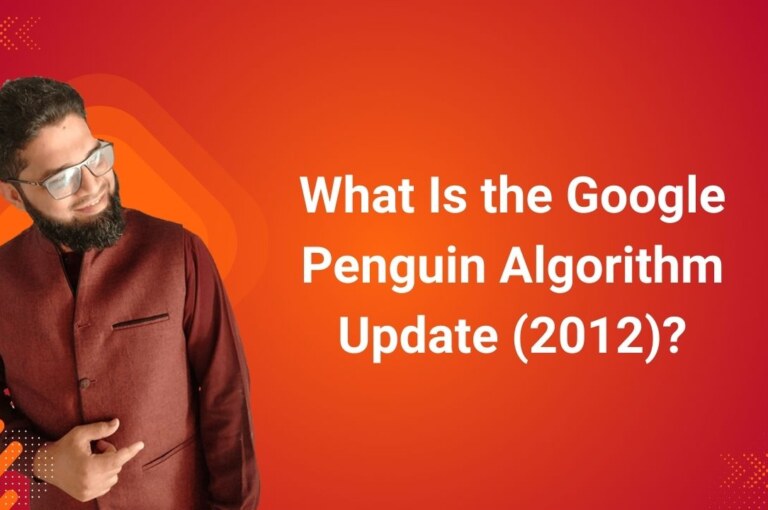What Is the Google Penguin Algorithm Update (2012)?
Launched in April 2012, the Google Penguin Algorithm aimed at improving the quality of search results by penalizing websites using manipulative tactics to artificially boost rankings. This major update focused on penalizing black-hat SEO strategies such as excessive keyword stuffing, link farming, and the use of over-optimized anchor text.
Before Penguin, many websites employed tactics that manipulated Google’s algorithms, like acquiring vast quantities of low-quality backlinks. Penguin shifted the focus to rewarding high-quality, authoritative links and emphasizing the naturalness of link-building.
Why Was the Google Penguin Algorithm Introduced?
The Problem with Pre-Penguin SEO:
Before Penguin, some websites achieved high rankings using unethical practices, such as:
Buying backlinks: Websites purchased links from unrelated sites to artificially boost their domain authority.
Link farming: Creating networks of interconnected websites to share links.
Using automated tools to generate a large number of low-quality links.
Over-optimizing anchor text: Excessive use of the same keyword anchor text like “best cheap laptops” in backlinks.
The result was that search engines were displaying low-quality websites with manipulated links instead of valuable, trustworthy content. Google aimed to correct this by improving the relevance of search results.
Google’s Goal with Penguin:
Improve search quality: Deliver more relevant, high-quality search results to users.
Encourage ethical SEO: Promote the use of authentic link-building methods, focusing on natural links rather than spammy techniques.
How Did the Penguin Update Change SEO?
The Penguin update profoundly impacted link-building strategies and website rankings. Here’s how SEO changed after Penguin:
1. Penalizing Manipulative Links:
Websites using low-quality links saw significant ranking drops. Google ignored or penalized unnatural link patterns and gave preference to natural backlinks.
2. Impact on Anchor Text Optimization:
Websites with overuse of exact-match anchor text (e.g., “best running shoes” used 100+ times) were penalized for over-optimization.
3. Bad Practice Example:
100+ backlinks using the anchor text “best running shoes”, all from irrelevant or low-quality websites.
4. Good Practice Example:
“Best shoes for runners”, “Top marathon shoes review”—using natural variations in anchor text from authoritative websites.
5. Prioritizing Natural Link Profiles:
Penguin rewarded websites with diverse link sources (e.g., blogs, news articles, and directories) and penalized websites relying on spammy backlinks.
Major Penguin Algorithm Updates
Google continued to refine Penguin with multiple updates after its initial release:
1. Penguin 1.0 (April 24, 2012):
Affected 3.1% of global search queries.
2. Penguin 1.1 (May 25, 2012):
Penalty refresh for newly identified spammy sites.
3. Penguin 1.2 (October 5, 2012):
Continued refining how links were assessed.
4. Penguin 2.0 (May 22, 2013):
Deeper link analysis, affecting 2.3% of global queries.
No longer limited to just homepages but included entire websites.
5. Penguin 2.1 (October 4, 2013):
Improved detection of low-quality link networks and unnatural link patterns.
6. Penguin 3.0 (October 17, 2014):
Broad refresh that reassessed link profiles, allowing sites to recover.
7. Penguin 4.0 (September 23, 2016) – Major Change:
Became part of Google’s real-time core algorithm.
Bad links are devalued rather than penalizing the entire site.
Faster recovery: once issues are fixed, rankings improve in real-time.
How to Recover from a Penguin Penalty
If your website was impacted by Penguin, follow these steps to recover:
1. Step 1: Conduct a Link Audit
Use tools like Google Search Console, Ahrefs, or SEMrush to identify and assess the quality of backlinks.
2. Step 2: Remove Toxic Links
Manually reach out to webmasters to request link removal or use the Disavow Tool if removal isn’t possible.
3. Step 3: Disavow Bad Links
Create a disavow file with a list of toxic backlinks and submit it via Google Search Console to tell Google to ignore them.
4. Step 4: Build High-Quality Links
Focus on earning natural, authoritative backlinks through guest posts, partnerships, and high-value content.
5. Step 5: Monitor SEO Progress
Keep track of organic traffic, rankings, and backlinks regularly to ensure improvements.
The Current Status of Google Penguin
Since Penguin 4.0, the algorithm has become part of Google’s real-time ranking system, meaning:
No site-wide penalties: Bad links are simply devalued without impacting the entire website.
Faster recovery: Fixes take effect immediately, allowing quicker improvements.
Ongoing: Penguin is continuously active, running as part of the core algorithm.
What This Means for SEO Today:
Spammy link-building no longer works; Google has become too advanced.
Focus on high-quality, organic links, user experience, and relevant content to succeed in modern SEO.
Trust and authority are now key for ranking high on Google.
Final Thoughts on Penguin Update
The Google Penguin Algorithm Update fundamentally changed how search engines assess links and has had a lasting impact on SEO strategies. By prioritizing high-quality backlinks and penalizing manipulative tactics, Google improved the relevance and quality of search results for users.
Today, Penguin remains part of Google’s core algorithm, continuously assessing link profiles and promoting ethical SEO practices.
For SEO success in the post-Penguin world, focus on building natural, high-quality backlinks, creating valuable content, and prioritizing trust and authority across all areas of your SEO strategy.
Want to Go Deeper into SEO?
Explore more from my SEO knowledge base:
▪️ SEO & Content Marketing Hub — Learn how content builds authority and visibility
▪️ Search Engine Semantics Hub — A resource on entities, meaning, and search intent
▪️ Join My SEO Academy — Step-by-step guidance for beginners to advanced learners
Whether you’re learning, growing, or scaling, you’ll find everything you need to build real SEO skills.
Feeling stuck with your SEO strategy?
If you’re unclear on next steps, I’m offering a free one-on-one audit session to help and let’s get you moving forward.




